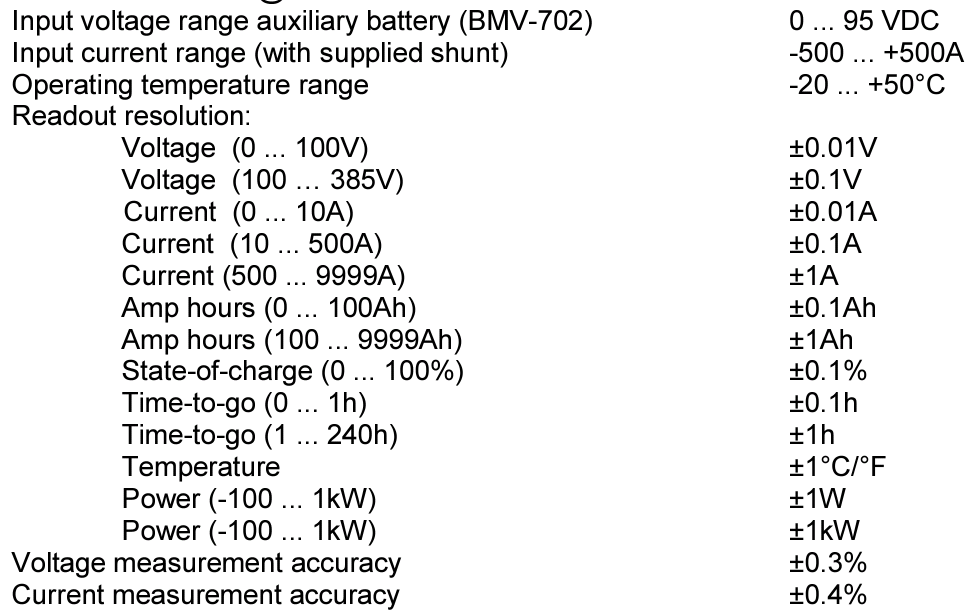Hello,
I have read through some threads discussing this, but am still not sure the best course of action. I have the BVM712 hooked up. Everything is hooked up correctly and seems to be working well, but the voltage is consistenly lower than the actual measured voltage at the battery. The only connection that could be faulty is the supplied cable with fuse that plugs into the shunt. I have checked it and it is fine. I measure at the point where the cable connects to the battery and get the proper measurement, but the BVM shows less voltage.
I read that one user subbed in a 1A fuse for the supplied 100A fuse and that corrected the problem, but this seems strange that Victron would supply something that gave a faulty reading when the whole point was it's accuracy.
Is this really the best route to try to solve this problem? What are other users doing to correct this?


